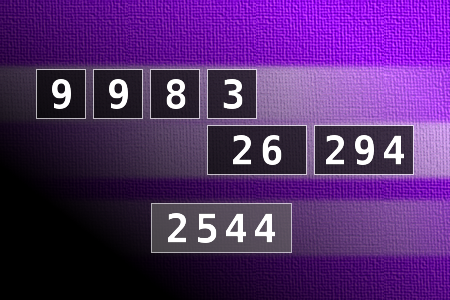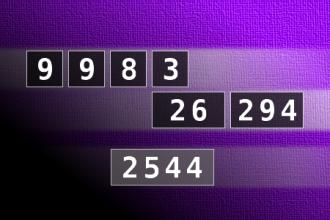Calculate the number 2544
NUMBERMANIA: Calculate the number 2544 using numbers [9, 9, 8, 3, 26, 294] and basic arithmetic operations (+, -, *, /). Each of the numbers can be used only once.
Husband wanted
A lonely 70-year-old widow decided that it was time to marry again. She put an ad in the local newspaper that read: "Husband wanted! Must be in my age group, must not beat me, must not run around on me and must still be good in bed. All applicants please apply in person."
The following day, she heard the doorbell. Much to her dismay, she opened the door to see a gray-haired gentleman sitting in a wheelchair. He had no arms or legs.
"You're not really asking me to consider you, are you?" the widow asked: "Just look at you -- you have no legs!"
The old gent smiled: "Therefore, I cannot run around on you!"
"You don't have any arms either!" she snorted.
Again, the old man smiled: "Therefore, I can never beat you!"
She raised an eyebrow and asked intently: "Are you still good in bed?"
The old man leaned back, beamed a big smile and said: "I rang the doorbell, didn't I?"

